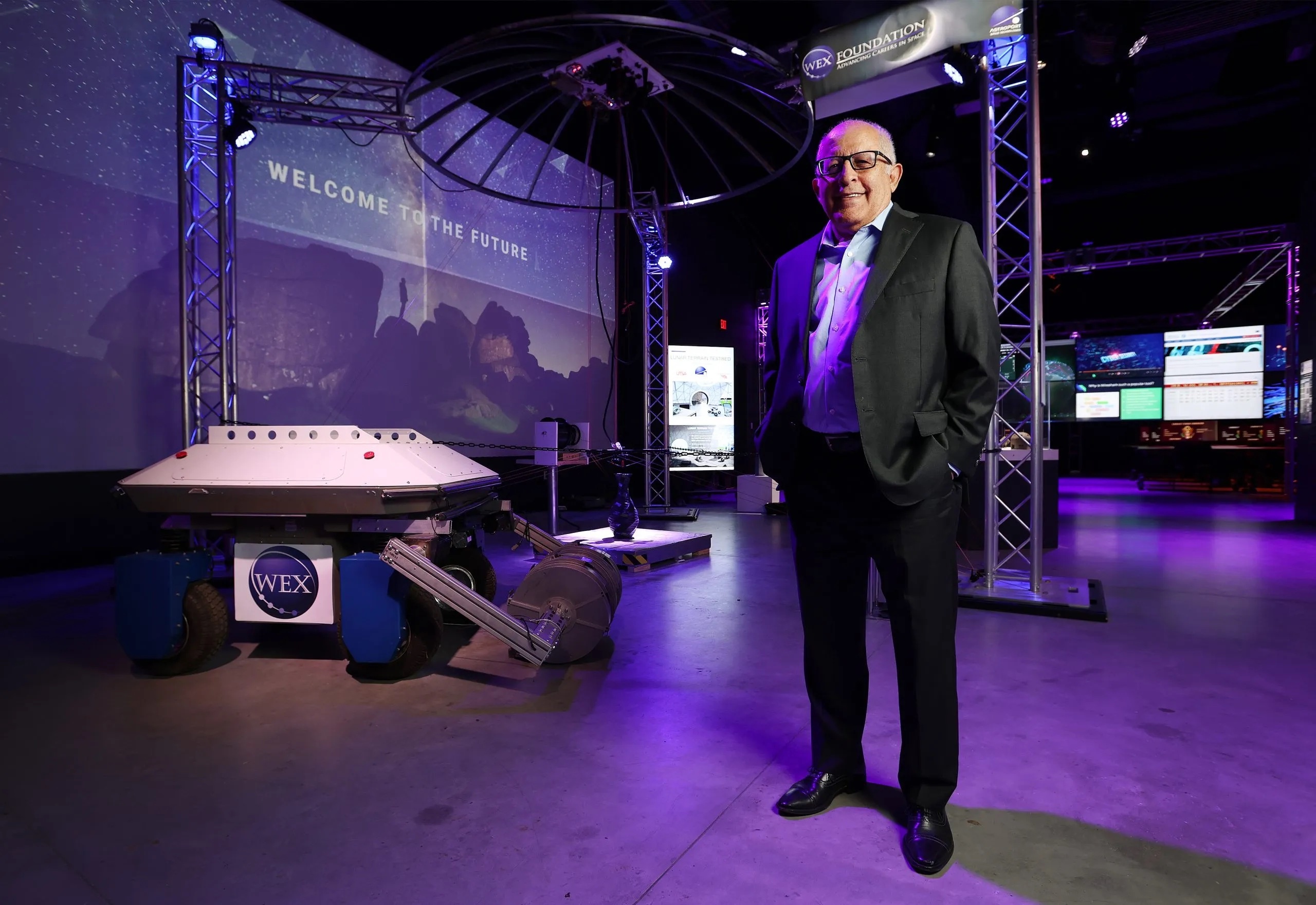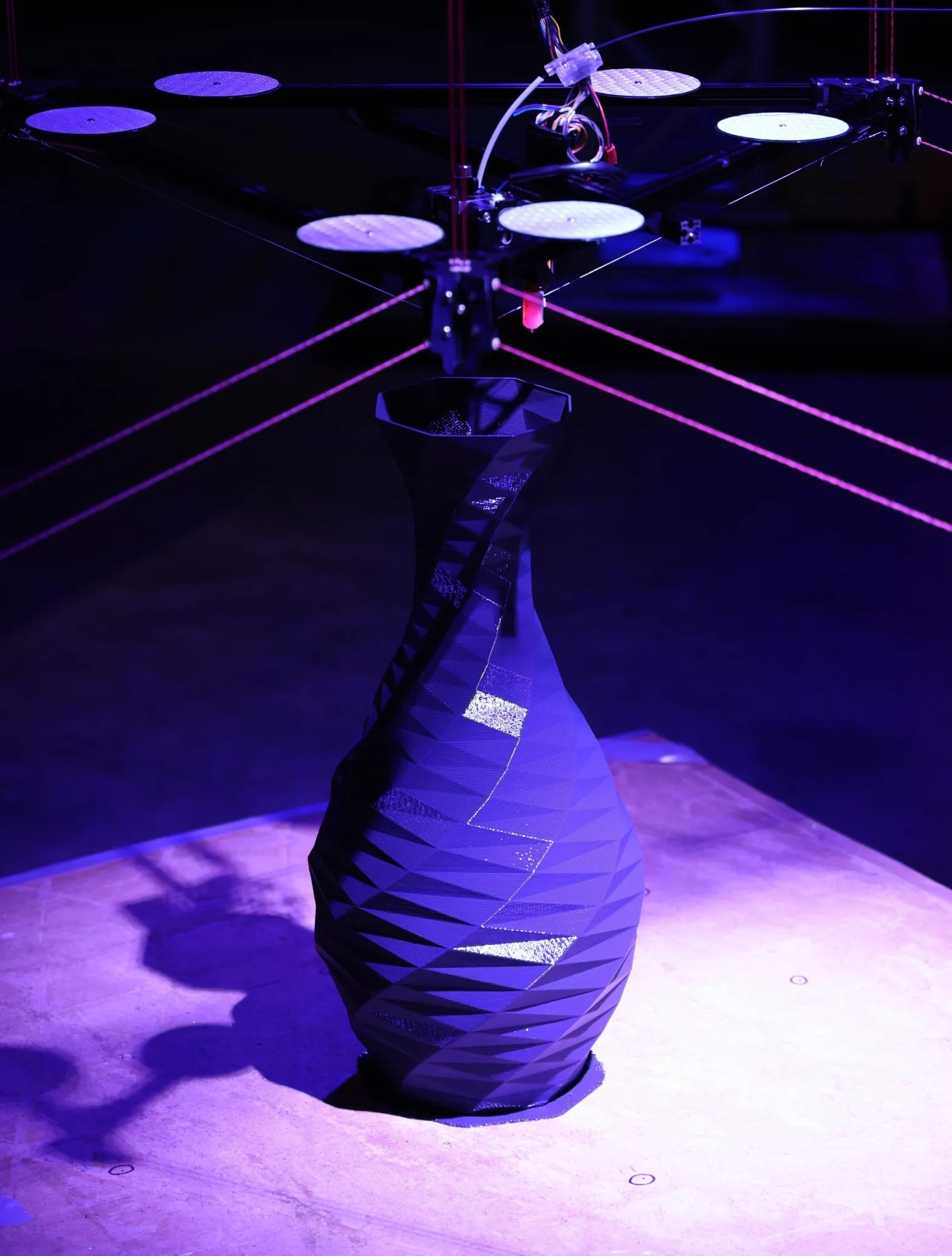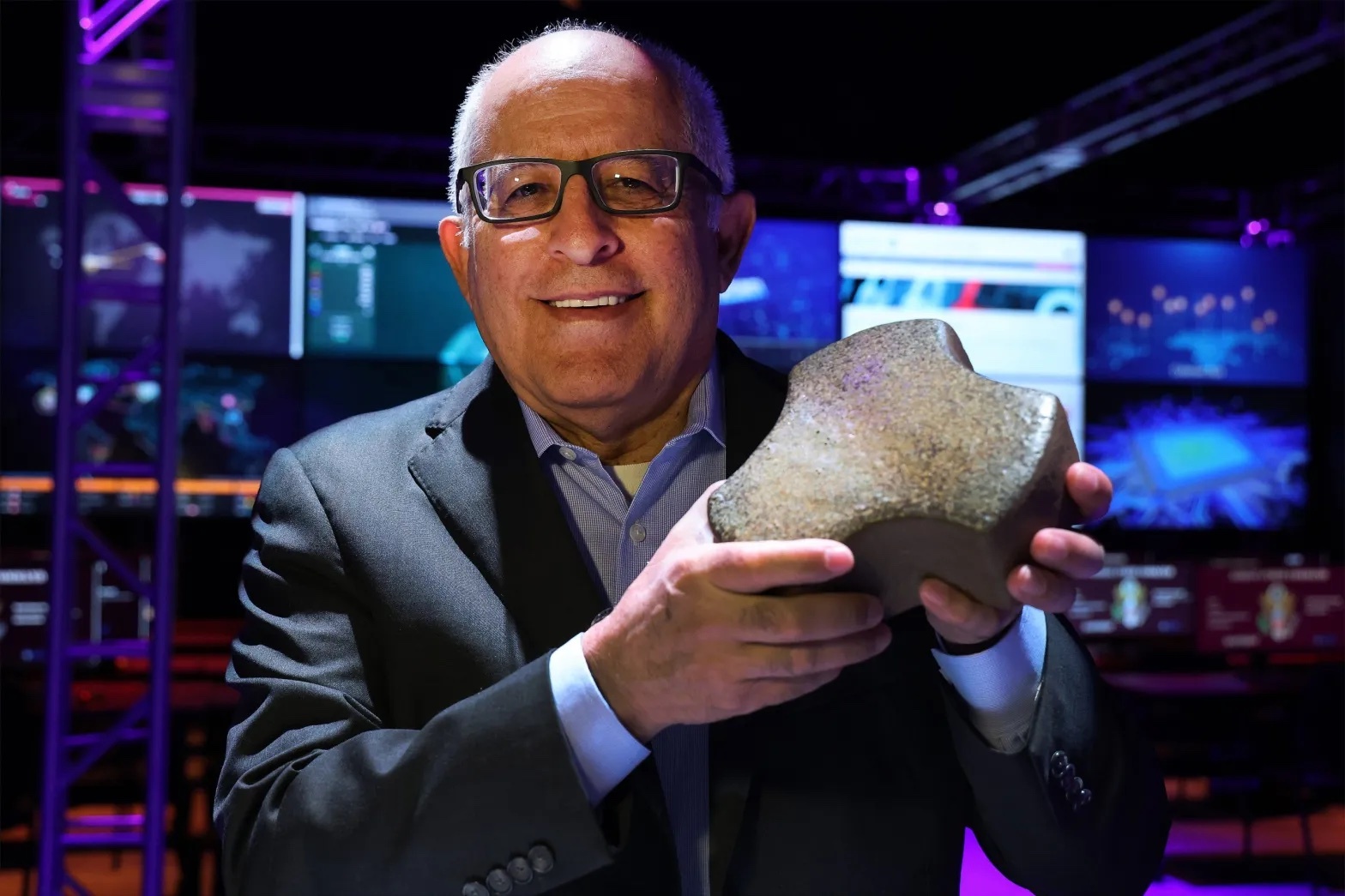27-12-2023

Sam Ximenes stands near what he calls his “Frankenbot” — a robot that is capable of excavating the lunar surface to create bricks from the moon dust — at the Boeing Tech Port Center's Area 21 SAMSAT Museum. Credit: Kin Man Hui for the San Antonio Report
His father was a judge, his uncle was a civil rights activist, and another uncle became the first Hispanic commissioner appointed by a president.
Sam Ximenes is a pioneering space architect who has a big vision and plans to make San Antonio a hub for space exploration and architecture.
Space architecture is the design and building of physical structures for human needs in outer space. As the field grows, more people are needed to build space stations, habitats and lunar or planetary bases.
And while his local companies achieve success through design, Ximenes is recruiting San Antonio students for the workforce, making STEM education, tech and architecture accessible.
His work, belief in education, and entrepreneurial spirit follow the steps of his family, who achieved the Mexican American dream through the same values.
Born at Joint Base San Antonio-Fort Sam Houston and baptized at the San Fernando Cathedral, the San Antonio native founded the Exploration Architecture Corporation, known as XArc, and Astroport Space Technologies, companies focused on designing and developing lunar surface infrastructure from raw moon material.
This year, their work attracted more than $1 million in NASA grants to fund technologies needed for lunar surface landing and launch pads.
In 2016, he founded the nonprofit WEX Foundation, which offers programs for children in San Antonio that introduce them to space exploration and engineering. It’s named after his late father, Judge Waldo E. Ximenes, who he described as an unwavering proponent of educational opportunity for those who were economically or socially disadvantaged.
Ximenes has worked for aerospace companies like Lockheed Martin, L-3 Communications, and Futron Corporation, but he eventually came back to his roots in San Antonio. In May 2023, Ximenes was inducted into the San Antonio Aviation and Aerospace Hall of Fame.
He comes from a line of exemplary Mexican American public servants: His uncle Vicente T. Ximenes was the first Hispanic commissioner of the Equal Employment Opportunity Commission, appointed by President Lyndon B. Johnson.
Another uncle, Edward Ximenes, was the first Hispanic member appointed to the Board of Regents for the University of Texas System. For 25 years, he advocated for a UT campus at San Antonio. Today, a UTSA campus driveway street and a building are named after him.
His family had roots in Floresville, but Ximenes grew up as a military brat, moving often. At seven years old, he lived in Germany at the height of the Cold War.
In a 2013 TedxSan Antonio Talk, Ximenes said he found a cave one day. He lay on his belly and crawled to the end of the tunnel in pure darkness and found a box of German coins.
“That sense of adventure and discovery into the darkness of that cave has never left me,” he said in his speech.
Today, Ximenes’ companies are developing technology to explore caves on the lunar surface.
But where does that tech come from to get to the moon — or Mars?
“Right here,” he said. “You can’t tell me the economic development of this lunar base is not tied to the economic development of the community that sponsored it: San Antonio.”
Because of the growth of his companies that work with space companies and agencies, like Virgin Galactic, the U.S. military and NASA, Ximenes spends most of his days doing administrative work.
Much of what he talked about in that Tedx talk a decade ago has come to fruition, thanks to NASA depending on private companies and other institutions like the Southwest Research Institute and the University of Texas at San Antonio to advance space exploration.
Now, Ximenes is predicting a continuation of those partnerships. “What’s going to happen next is we’re going to build an economy,” he said. “The next economy is going to be in space: A cislunar economy,” referring to the space between the earth and the moon.
And as people and starships begin to come and go while they dig for resources on the moon or Mars, Ximenes said fuel depots for them will be essential.
Grinning while he speaks, Ximenes has the enthusiastic energy of a visionary, but has the business plans to back it up.
Astroport’s goal is to create the technology and architecture to be a space port fixed base operator, similar to business models that serve aircrafts, for example, doing refueling and maintenance.
“We want to be the same thing on the moon for the rockets [and] lunar landers coming and going, to resupply,” he said. “It’s the same model that provided the shuttles for the gold miners in the old days. We’re not digging for gold, we’re providing the shuttles, is kind of my idea. … We’re going to be the port, the gateway to the lunar locations.”

On display at the Boeing Center at Tech Port Area 21 SAMSAT Museum is a working 3D printer that could one day be used to build habitats on the moon. Credit: Kin Man Hui for the San Antonio Report
But that sort of work can’t be done in the future without access to STEM education for young people to learn the necessary skills to succeed in the future. That’s where his WEX Foundation comes in.
On Dec. 4, Melody Herrera walked inside the Boeing Center at Tech Port with her 8-year-old nephew for an Aerospace workshop inside of Area 21, an introduction of what the WEX Foundation’s space exploration LCATS program.
“Recently we’ve had school closures that are happening and I wanted to make sure they were aware of that because our students need resources,” Herrera said, explaining she had proactively reached out to Area 21 about opportunities for her nephew.
“I hope it just gives him a learning opportunity to let him know his options and also just to help him with other executive function skills and knowledge that he’s not getting in school,” she said.
Out of all his ventures, the WEX Foundation is Ximenes’ favorite endeavor. He chuckled describing the excitement on students’ faces when they explore the lunar cave sites through the program.
“We have students that have gone on to MIT. … Seeing that happen is very satisfying, seeing they’re being successful,” he said. “We have students that have gone on to become NASA interns as well. … It’s still a young program, but we’re seeing the success.”

Sam Ximenes holds a brick made of moon dust on display at the Area 21 SAMSAT Museum. Credit: Kin Man Hui for the San Antonio Report
Ximenes’ career in space architecture took off after a business venture that ended in bankruptcy. He went back to school for a master’s in space architecture from the University of Houston.
At the time, the new program was called design for extreme environments, said Larry Toups, an adjunct professor at the University of Houston’s Saskawa International Center for Space Architecture who studied and worked with Ximenes on projects in the late 1980s.
Toups, who did space architecture for NASA’s International Space Station for 25 years, worked beside Ximenes on projects that showed Ximenes “has a vision,” and that he’s good at looking at the big picture.
“When you’re working on a project, such as an international space station, … [he’s] able to focus down on those areas that particularly touch the humans,” Toups said. “In the case of space, the astronauts themselves.”
Space architecture is a relatively new field, and the community of people who have backgrounds like Ximenes’ is narrow, Toups said. He recalled Ximenes being one of the first people of color to be in a program like space architecture, especially because the number of students was still low.
“Being such an emerging field, he’s done a lot to break barriers and identify opportunities. He does that by example of what he’s done and what he’s doing now,” Toups said. “He still maintains that enthusiasm he had when I first met him.”
Quelle: San Antonio Report
